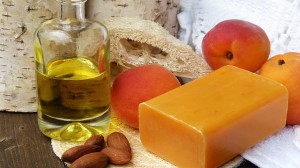Clearly no two products are exactly alike and therefore each merits a unique marketing strategy. However, certain products carry similar characteristics in terms of price level, similarity between competing brands, and the way consumers approach them in the buying process. It is often useful to group these similar products into categories in order to help set up marketing strategies for each segment. This process is known as product classification.
Within the category of consumer products, there are four main classifications: convenience goods, shopping goods, specialty goods, and unsought goods. This article will describe characteristics of goods in each category, provide examples, and discuss relevant marketing strategies. Additionally, it will touch on the validity of this model of product classification as a useful input for developing marketing strategy.
Convenience Goods
These are products that consumers purchase often and habitually, without much thought given. Convenience goods usually are low-cost items with little differentiation between brands, and therefore customers often pick a brand one time and then remain with that brand without reconsidering. Examples include toothpaste, ketchup, soap, and candy.
Marketing Strategy
 Because convenience goods carry a relatively low price, consumers usually don’t bother price-checking—they simply stick with the brand they have always bought. For that reason, pricing isn’t overly important as long as the company doesn’t raise prices to the point of being significantly different from competitors. If someone always purchased Crest toothpaste for their entire life, they will not bother checking Colgate’s price to see if they can save a few cents; it’s a habitual purchase. Wide-scale promotion is very important in order to build brand recognition. Typically for a quick, impulsive purchase consumers will choose a brand that they have heard of and are familiar with (Heinz ketchup, for example, holds over 60% market share in the US largely because of its iconic brand). Strategic placement is also frequently used in an attempt to sell convenience goods. A common example is when stores will place candy and other small items right next to the checkout line in hopes of stirring up impulse purchases.
Because convenience goods carry a relatively low price, consumers usually don’t bother price-checking—they simply stick with the brand they have always bought. For that reason, pricing isn’t overly important as long as the company doesn’t raise prices to the point of being significantly different from competitors. If someone always purchased Crest toothpaste for their entire life, they will not bother checking Colgate’s price to see if they can save a few cents; it’s a habitual purchase. Wide-scale promotion is very important in order to build brand recognition. Typically for a quick, impulsive purchase consumers will choose a brand that they have heard of and are familiar with (Heinz ketchup, for example, holds over 60% market share in the US largely because of its iconic brand). Strategic placement is also frequently used in an attempt to sell convenience goods. A common example is when stores will place candy and other small items right next to the checkout line in hopes of stirring up impulse purchases.
Shopping Goods
In contrast, consumers looking to purchase shopping goods are more willing to do research and compare different product options. The reason for this is because shopping goods are higher-priced or more important items within a person’s life and therefore it is a more economic use of consumers’ time to compare products. Examples can include extremely large purchases like houses and cars or more modest items like clothing. Take cars– people are willing to exert significant time and resources looking online, visiting multiple dealerships, and test-driving different vehicles to find the best car for the price.
Marketing Strategy
 Strategically, product quality and pricing are much more important for shopping goods than for convenience goods. With customers actively weighing their options, it is vital for a company to provide an offering with attractive value. This can mean selling a product that is better quality than competitors for the same price or selling a product that is similar in quality but at a lower price. The larger the purchase, the more important marketing the good becomes because customers will more actively consider the product’s price-value relationship. Promotion is also important for shopping goods in order to differentiate a product from its competitors and to communicate the value proposition to customers. Whereas promoting convenience goods simply focused on awareness, promoting shopping goods must focus on separating a product from its competition in the minds of customers.
Strategically, product quality and pricing are much more important for shopping goods than for convenience goods. With customers actively weighing their options, it is vital for a company to provide an offering with attractive value. This can mean selling a product that is better quality than competitors for the same price or selling a product that is similar in quality but at a lower price. The larger the purchase, the more important marketing the good becomes because customers will more actively consider the product’s price-value relationship. Promotion is also important for shopping goods in order to differentiate a product from its competitors and to communicate the value proposition to customers. Whereas promoting convenience goods simply focused on awareness, promoting shopping goods must focus on separating a product from its competition in the minds of customers.
Specialty Goods
Specialty goods are products are so unique or have such a loyal following that consumers will go to extensive lengths to seek them out. Rather than comparing brands looking for an attractive value, buyers of specialty goods focus on seeking out the one specific product they are looking for. Examples include Ferraris, GoPro cameras, and iPhones.
Marketing Strategy
 Typically, consumers of specialty goods do not have much price sensitivity—they are willing to pay whatever price is necessary for the product or brand that they prefer. Someone purchasing a Ferrari likely doesn’t care if a similar car is a few thousand dollars cheaper; they are paying for the brand name and the social status that comes with owning a Ferrari. Therefore, more of the company’s strategic focus needs to be centered on developing outstanding and innovational products that will retain the loyalty of their following. Promotion focuses on demonstrating the company’s latest great product and when/where people can buy it. It is also important to promote status that comes with the brand.
Typically, consumers of specialty goods do not have much price sensitivity—they are willing to pay whatever price is necessary for the product or brand that they prefer. Someone purchasing a Ferrari likely doesn’t care if a similar car is a few thousand dollars cheaper; they are paying for the brand name and the social status that comes with owning a Ferrari. Therefore, more of the company’s strategic focus needs to be centered on developing outstanding and innovational products that will retain the loyalty of their following. Promotion focuses on demonstrating the company’s latest great product and when/where people can buy it. It is also important to promote status that comes with the brand.
Unsought Goods
The final category of product is unsought goods—products that consumers either do not know about or would never think of buying. They are often items that people buy out of a sense of fear or danger, such as life insurance or fire extinguishers. Another example is batteries; no one ever thinks to buy a battery until their old ones die and need replacement.
Marketing Strategy
 The key to marketing unsought goods is to remind consumers that the product exists and to convince them that they need to purchase the product to avoid future hardships. For example, a company might run an emotional campaign focusing on how the potential customer’s loved ones will suffer financially if the customer dies unexpectedly. If successful, this would convince the buyer that purchasing a policy is a payment toward protecting their family and they would be compelled to go through with it in order to not have to worry about the potential danger. A lot of promotion is necessary, because consumers rarely think about buying such products unless they are prompted to.
The key to marketing unsought goods is to remind consumers that the product exists and to convince them that they need to purchase the product to avoid future hardships. For example, a company might run an emotional campaign focusing on how the potential customer’s loved ones will suffer financially if the customer dies unexpectedly. If successful, this would convince the buyer that purchasing a policy is a payment toward protecting their family and they would be compelled to go through with it in order to not have to worry about the potential danger. A lot of promotion is necessary, because consumers rarely think about buying such products unless they are prompted to.
Validity of Model
 There are certain issues or uncertainties within the product classification model that need to be taken into consideration. One problem is that certain goods can potentially fall under multiple categories. For example, certain customers may see diamonds as a shopping good and compare prices extensively between brands before making a purchase. Other consumers may have chosen one brand as the best (ie Tiffany & Co.) and they buy that brand for the quality and status it brings. Sometimes product classification can vary depending on the individual customer that is buying the good.
There are certain issues or uncertainties within the product classification model that need to be taken into consideration. One problem is that certain goods can potentially fall under multiple categories. For example, certain customers may see diamonds as a shopping good and compare prices extensively between brands before making a purchase. Other consumers may have chosen one brand as the best (ie Tiffany & Co.) and they buy that brand for the quality and status it brings. Sometimes product classification can vary depending on the individual customer that is buying the good.
Additionally, convenience goods and shopping goods can have some overlap. There are customers that may have bought Dove soap for their entire life, but will switch to Ivory if they look on the shelf and notice that it’s cheaper. Sometimes the social responsibility of the company producing the good can play a factor in the consumer’s choice as well. If it gets out that one toothpaste-maker mistreats their workers, there are a lot of people that would make a conscious decision to switch to a different brand.
While there are certainly some concerns with the product classification model and some external factors to keep in mind, it remains a useful general tool to help in planning marketing strategy. This lesson is part of the PersonalFinanceLab curriculum library. Schools with a PersonalFinanceLab.com site license can get this lesson, plus our full library of 300 others, along with our budgeting game, stock game, and automatically-graded assessments for their classroom - complete with LMS integration and rostering support!

Get PersonalFinanceLab
[qsm quiz=110]
